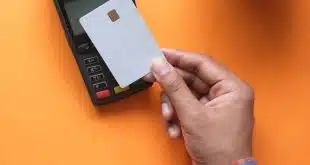While formal bank recruitment hasn't started yet, an 18-month pilot to test the idea of transmitting check data as automated clearing house files is likely to get under way no sooner than the middle of next year, says a senior executive at NACHA, which is sponsoring the project. “[That] would probably be the earliest [date] for actual transaction exchange,” says Ian Macoy, managing director of network development at Herndon, Va.-based NACHA, the governing body for the ACH. The pilot for what NACHA calls Deposited Check Truncation (DCT) was originally supposed to begin in the first quarter (Digital Transactions News, Oct. 11, 2007). A year ago, NACHA officials said some 20 financial institutions of varying sizes had expressed interest. Now, Macoy says he “can't give a hard number,” but insists bank interest is strong in the idea, which would allow financial institutions to merge elements of image exchange with elements of the ACH. He says the delay in starting the pilot stemmed from the fact that many institutions had already tied up information-technology resources for the year with other projects. “A year ago, we were getting ready to pull the trigger on transactions, but our timing was a little off,” says Macoy. “We had already flipped to the next year for budgets at a number of financial institutions.” While interest is strong, he says, NACHA has not yet solicited any banks to participate. Some outside observers argue the delay has hurt DCT. They say that image exchange has made strides in the intervening months towards getting more paying banks to receive and clear electronic check images. Interest in DCT had been sparked by the need at banks of first deposit to generate relatively expensive paper printouts of images for paying banks that weren't equipped to settle images. While these banks couldn't receive images, the ACH could reach them, the thinking went. But now, “the overwhelming progress in image exchange has severely reduced interest in the program, [and] even more progress will be made by the time DCT makes any significant progress,” says George Thomas, principal at Radix Consulting, Oakdale, N,Y., in an e-mail message to Digital Transactions News. The number of financial institutions receiving check images had reached almost 11,000, or 68% of all U.S. institutions, by the end of June, according to the Electronic Check Clearing House Organization, which tracks image exchange. But Macoy counters that the progress of image exchange has only heightened interest in DCT. “There's value in DCT even given a very robust environment for image exchange,” he says. “Institutions see DCT as a way to leverage remote deposit capture and imaging.” With remote capture, merchants transmit check images to their banks for entry into image-exchange networks for settlement. Banks can use DCT as a way of offsetting the inevitable rise in check-imaging costs as the volume of checks written continues to drop, Macoy says. “Over time, the ACH will show up well on a per-unit cost basis,” he argues. Deposited Check Truncation calls for depository banks to capture payee data along with account and routing numbers from checks. The bank would transmit this information to paying banks as an ACH file. The bank would also create an image, but instead of sending the image to a common archive, it would store it in its own system. By picking up the payee information, some observers say, the new scheme makes huge and costly common archives unnecessary, since images would only be required to handle disputed items. Although NACHA will run the pilot, Macoy says the Federal Reserve has confirmed that DCT transactions will be covered not by Regulation E, which usually governs ACH payments, but rather the Uniform Commercial Code, articles 3 and 4, and Regulation CC, the rules governing checks. NACHA operating rules, however, will give consumers a right of recredit and paying banks a right of return on unauthorized items. Changes to the pilot details in the intervening months have been minor, Macoy says. For example, the cap on transactions has been raised from $25 to $50, with a provision that the limit could go as high as $250, depending on circumstances encountered during the pilot. “The interest is still in low-value checks,” Macoy says. Banks will be able to join the pilot even after it gets under way. Macay says recruitment will remain open for a year after the start date.
Check Also
Fiserv’s Clover Goes Down Under and other Digital Transactions News briefs from 3/31/25
Fiserv Inc. has introduced its Clover point-of-sale technology in Australia. The system is now available in …





